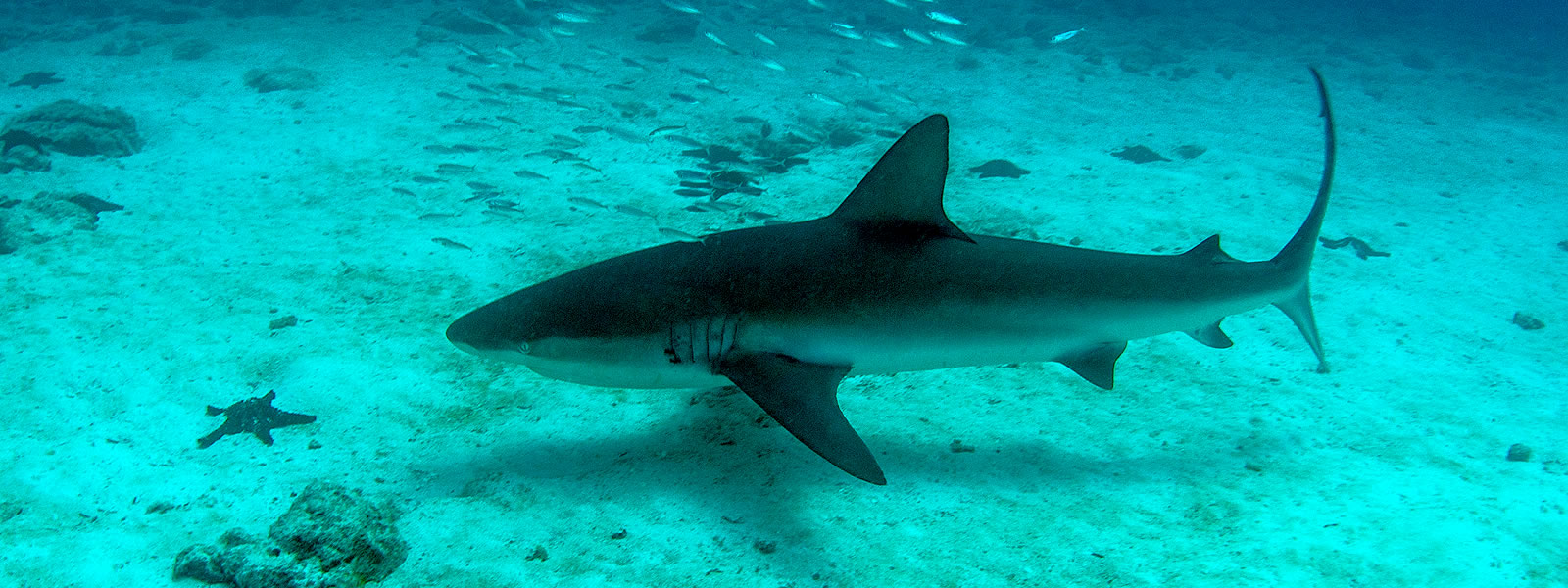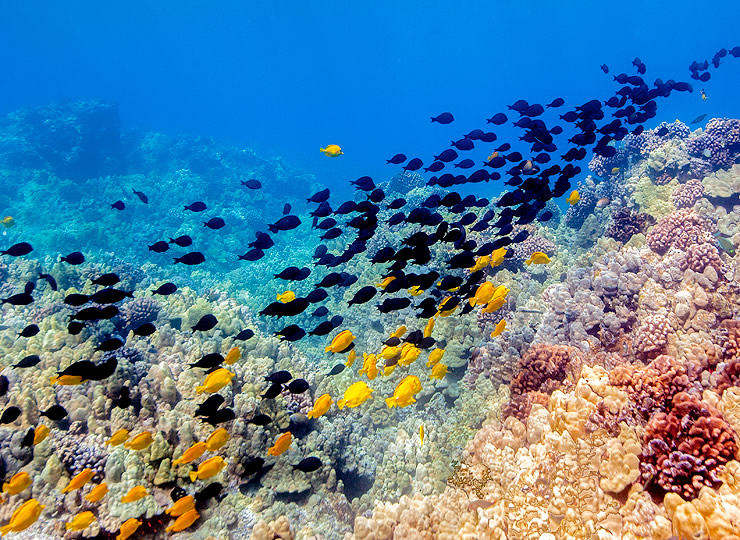Shark
Various species

Sharks are the top predators of many marine ecosystems, including coral reefs. Their presence has been linked to greater overall fish diversity near islands.
Range map of the Galapagos shark

The largest number and highest diversity of fish are found in places with sharks. Photo credit: iStock/Getty Images Plus
Coral reefs are a critical marine habitat. Even though they cover less than 1% of the ocean, they support an estimated 25% of all marine species. However, humans have negatively impacted reefs for at least 500 years — in part through the overfishing of large species at the top of the food chain, such as sharks and other predatory fish. One example, the Galapagos shark, has been hunted for its meat and fins.
Scientists are investigating how the ongoing loss of top predators affects reef ecosystems. Although reefs unaffected by humans are rare, which makes this research challenging, scientists have been able to study reefs with and without sharks near Hawaii. Top predators, including the Galapagos shark, are generally absent from reefs near the main Hawaiian Islands. However, these predators are still present in reefs near the northwestern Hawaiian Islands: a large, remote, lightly fished area that is otherwise similar to the main islands.
The study found that the absence of top predators changes the overall community of reef fish. Reefs with top predators tended to have more diversity, larger fish, and fish occupying a greater variety of trophic levels. In contrast, reefs without top predators had less diversity overall and were dominated by small herbivorous fish. These herbivorous fish eat the algae growing on the reef, which may impact other organisms that use the algae.
Although sharks and other top predators are clearly important for maintaining the balance of an ecosystem, one can argue that humans exert the ultimate control. Examples like these have been used to debate whether humans are the ultimate keystone species, as impacts of human activity are widespread across almost all ecosystems.